
Dongwook Suh, Afternoon-living room-HS, 2015, oil on canvas, 145.5 x 112.1 cm, ONE AND J. Gallery
In my opinion, at every art fair, collectors inevitably stumble across new loves and old flames. They have chance encounters with works by artists they’ve followed for a long time, as well as discover new ones for their collections. There are also moments when even major collectors get that pang—when they see a work that has already been sold and feel the regret of not buying sooner. At this year’s Singapore Art Week, I spoke to a few veteran collectors to discover their new loves, old flames, and the artworks that gave them a pang among those they encountered in the Lion City of Singapore.
Art SG is the first international art fair stop for Michael Xufu Huang, the founder and director of the X Art Museum, who has lived in China for the past three years throughout the pandemic. He has recently been busy with the relocation of the museum and preparing for the opening of X Museum’s collection of pink works. He actually encountered a version of himself in Singapore—in Afternoon Living Room-H.S by Korean artist Dongwook Suh, brought by One And J Gallery from Korea, which quickly became an addition to his collection. The boy in the painting bears a striking resemblance to him and obviously caught his attention. It’s interesting to imagine how the artist would have painted Michael today, now that he’s gained some wisdom and sophistication since his university days. It’s as if he’s just stepped into maturity at the ripe old age of 28—starting to show a bit of experience on that youthful face!

Faris Heizer, No Distance Left to Run, 2022, acrylic on linen, 198 x 198 cm, Cuturi Gallery
Many of Michael Xufu Huang’s new favourites from his trip to Singapore were the works of several local artists exhibited at Art SG by Cuturi Gallery in Singapore and London, including Faris Heizer (b. 1998), a Singaporean figurative artist whose work critiques contemporary society and its capitalist structure, often depicting intimate portraits of white-collar workers in imagined realities and narratives through bold, gestural brushstrokes—exploring the social effects of capitalism on human behaviour and performance; Khairulddin Wahab (b. 1990), a Singaporean artist who constructs anthropological and environmental narratives in his work using found images and iconography to explore the history of post-colonialism in Singapore and Southeast Asia; Jiaqi Chen (b. 1989), whose work explores the relationship between the urban environment and the individual; and Aisha Rosli (b. 1997), a figurative artist whose work draws on the styles of Egon Schiele, Francis Bacon, and Marlene Dumas.

Khairulddin Wahab, Landward, 2022, acrylic on linen, 190 x 160 cm, Cuturi Gallery

Aisha Rosli, Can’t Stop Wondering Where You Are, 2022, acrylic, oil and charcoal on linen, 160 x 140 cm, Cuturi Gallery

Shen Jiaqi, Every Distance Away, 2022, acrylic on linen, 140 x 100 cm, Cuturi Gallery
While there are many talented local artists in Singapore and Southeast Asia, their ability to make a name for themselves internationally is hindered by the information gap between the regional and global art markets, which has affected global participation and institutional support. Organising regional art fairs is a natural way of bridging this gap as it encourages international collectors and dealers and increases the acquisition of artists from particular regions by public art institutions.

Collector Alan Lo
image credit: Photo credit Abdela Igmirien
An example of this took place during Singapore Art Week when the SAM S.E.A. Focus Fund, supported by Yangjie Wong Pei Yin Foundation, run by Alan Lo and his wife Yenn Wong, was announced. The project was envisioned by Emi Eu, Director of STPI Gallery and organiser of S.E.A. Focus. Alan has long been a member of Tate Britain’s Asia Pacific Acquisitions Committee and has significantly contributed to fostering international recognition of regional artists. For this year’s Art Week, his selection of works from Manuel Ocampo and Genevieve Ang was on display at the S.E.A. Focus Art Fair.
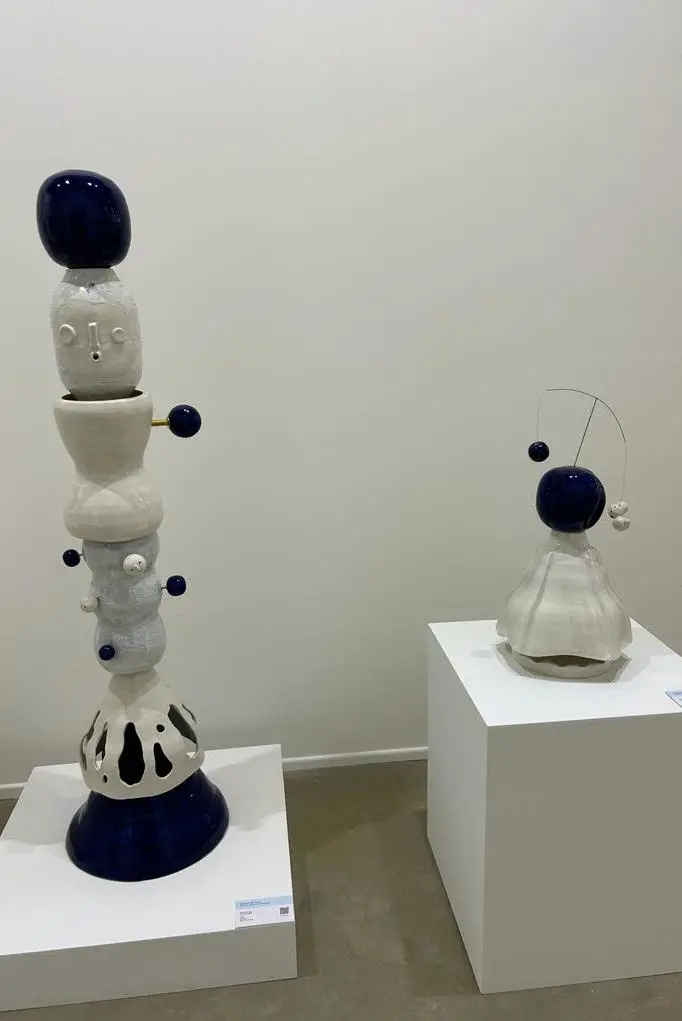
Geneviene Ang, (Co). C₈H₁₁NO2, ceramic, 165 x 35 x 35 cm, Sullivan+Strumpf
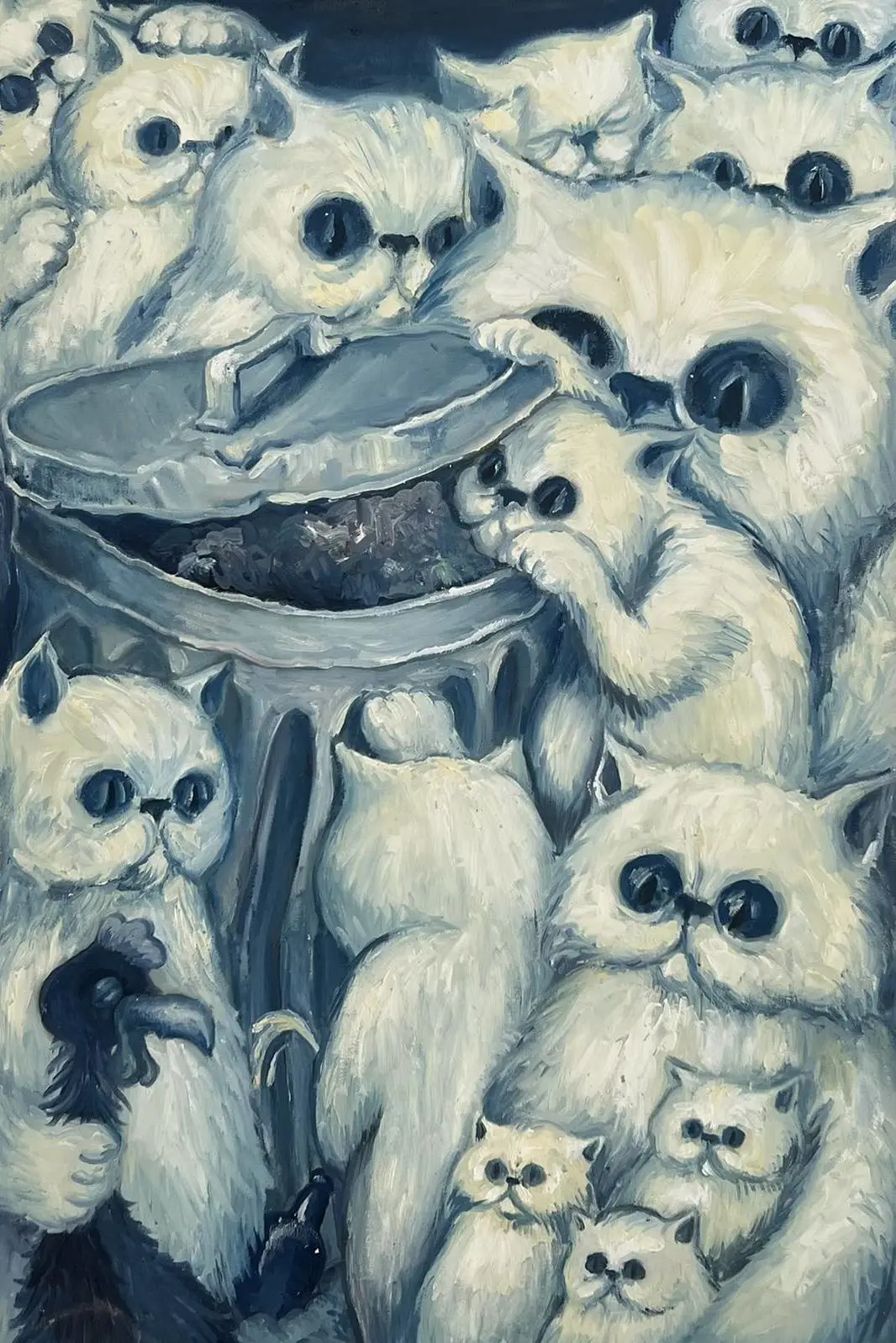
Manuel Ocampo, “The Vanity of Theories Taught Before Like Eternal Truths”, oil on canvas, 91 x 61 cm, The Drawing Room
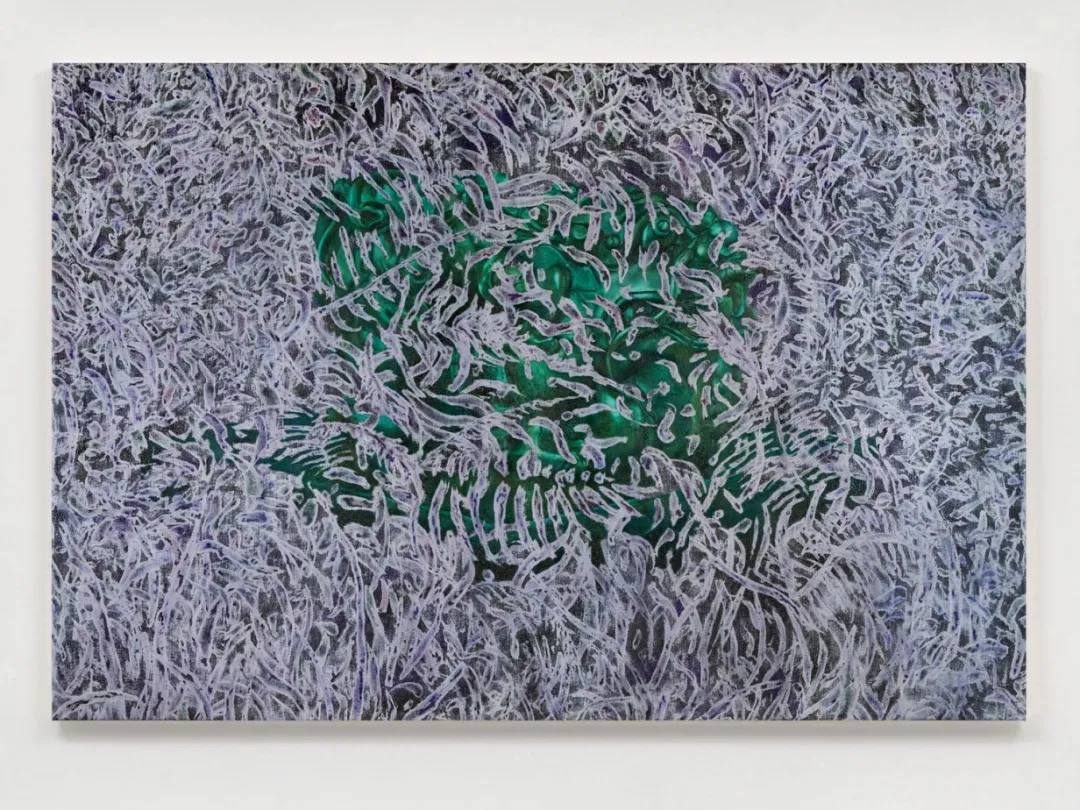
Michael Ho, A Passing of Dynasties and the Mandate of Heaven, 2022, oil and acrylic on canvas, 145 x 215 cm, Vacancy Gallery
Alan told me he felt a pang for an artwork by Michael Ho, which was presented by Vacancy Gallery in Shanghai. He said that he had wanted this work badly, but unfortunately, it was already owned by someone else when he asked. His newfound love at Art SG was a piece by the artist Seth Armstrong, whose bold saturated colours of urban buildings were showcased by Unit London gallery. Alan was also delighted to see the long-awaited work by Alvaro Barrington at Sadie Coles’ stand; Barrington’s approach to painting is nuanced, using non-traditional materials and techniques such as rags and sewing, and distinctive red, brown, yellow, and green compositions to present subjects like tropical vegetation in abstracted portraits.
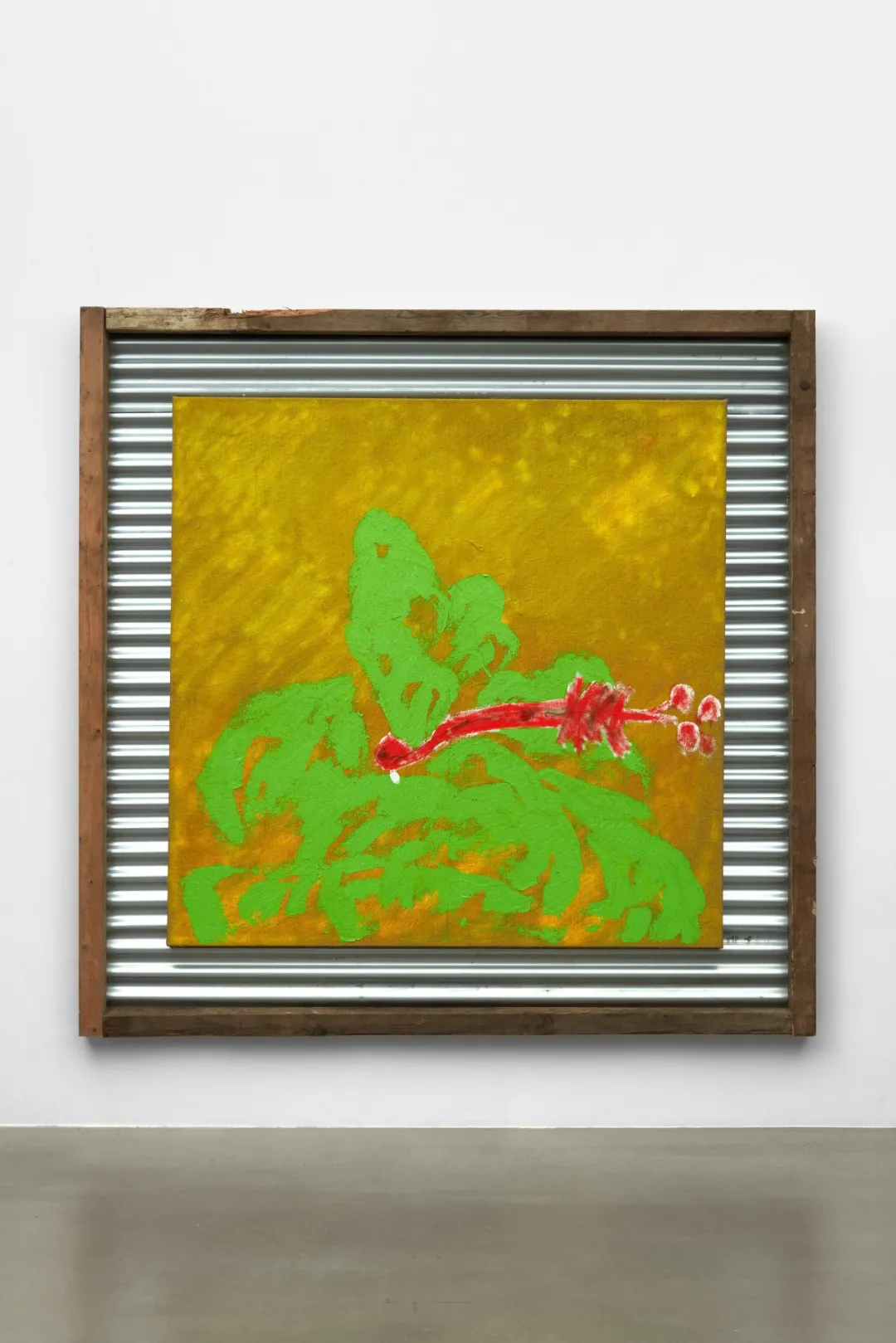
Alvaro Barrington, Grenada, 2021, mixed media, 170 x 170 x 5 cm, framed 226 x 226 x 10 cm, Sadie Coles Ltd

Timothy Tan, a collector from the Philippines – Photo by Jinggo Montenejo
Li Heidi, a young Chinese artist who burst onto the scene last year, now living and working in London, has a style that exemplifies the crossover of Eastern and Western markets. The work that Shanghai gallery Linseed Projects showed in its booth caused pangs for many collectors, including major Filipino collector Timothy Tan, who had previously learned of the young artist through Linseed Projects and seen her potential—following this, he added one of her pieces to his collection.
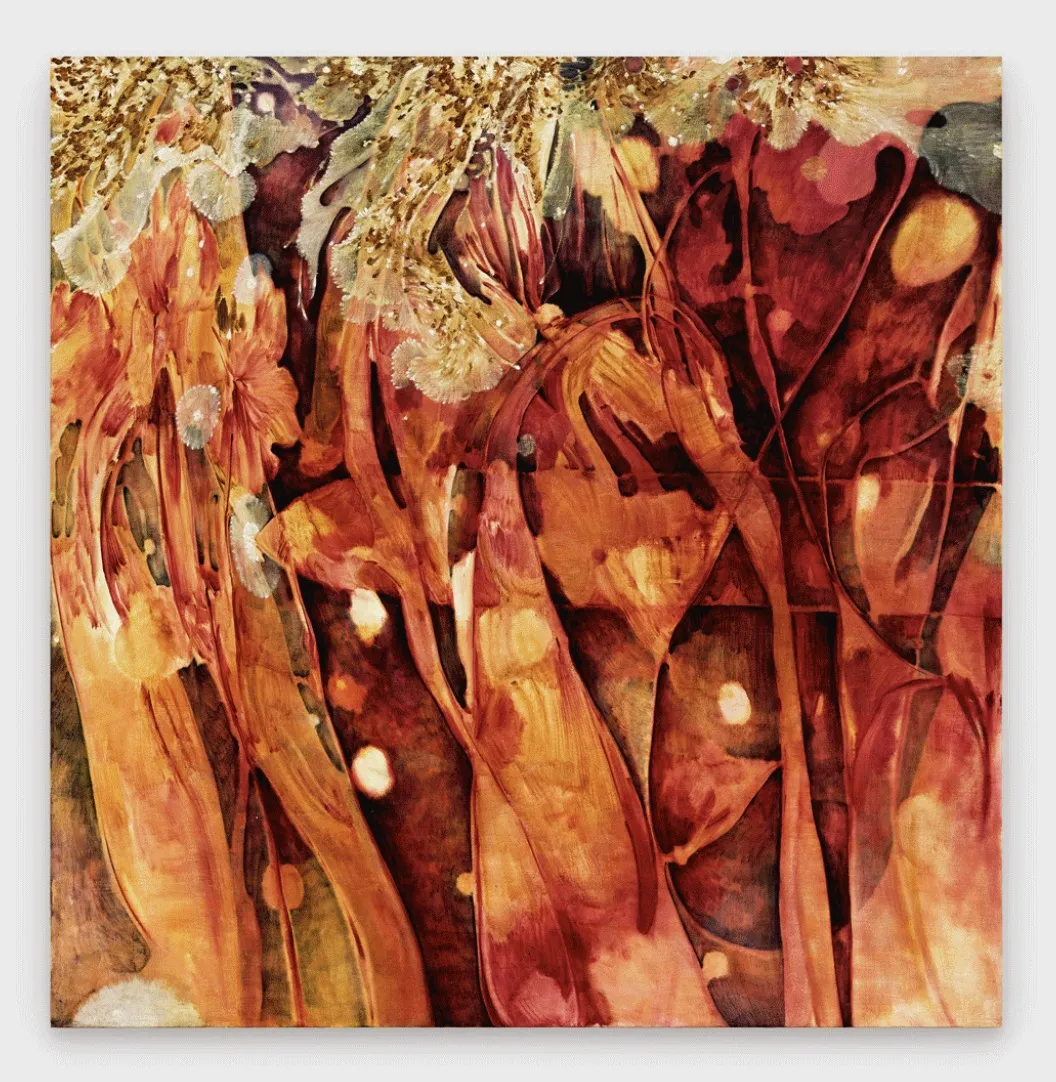
Li Heidi, “I Celebrated Dawn on a Deserted Island”, Linseed Projects
At Art SG, Timothy also had his eye on Filipino artist Celine Lee, whose work revolves around scientific and digital concepts to explore visual perceptions of place, and loved the work because the artist used banana hemp rope as a representation of traditional materials and practices of the Philippines and used it to depict a virtual landscape of the place from where both she and the material originated.
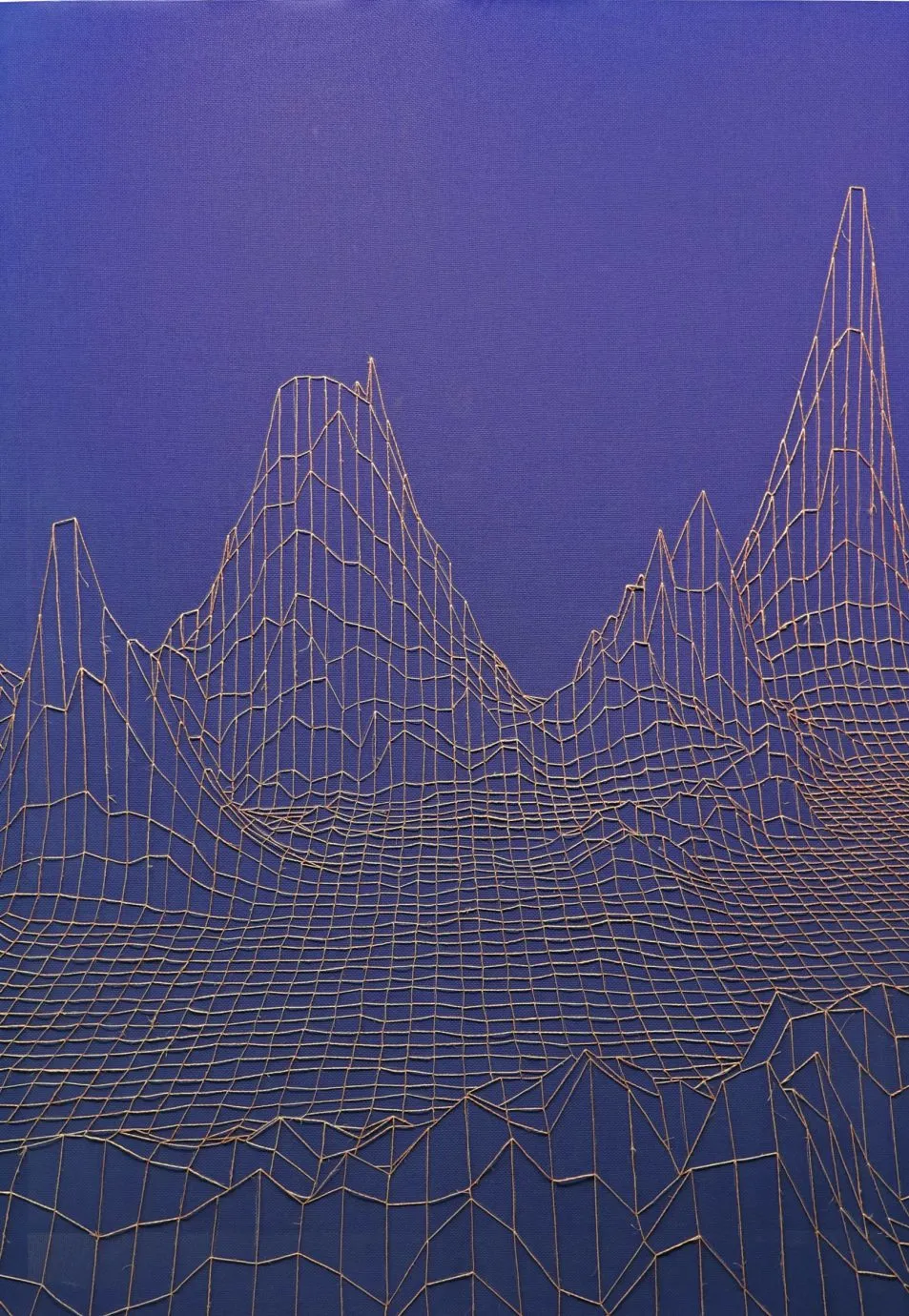
Celine Lee, “Artificial Land-scaled”, 2022, 190.5 x 127 cm, Artinformal Gallery
Another selection of Timothy’s from the exhibition is the work of Che Lovelace, an artist he has followed for some time. Lovelace’s colourful works depict the people and places from his home, Trinidad and Tobago, in a fusion of flora and fauna that straddles the line between magical realism and abstraction. Unable to find a larger canvas to paint on, the artist decided to collage small canvases together to create complex compositions.
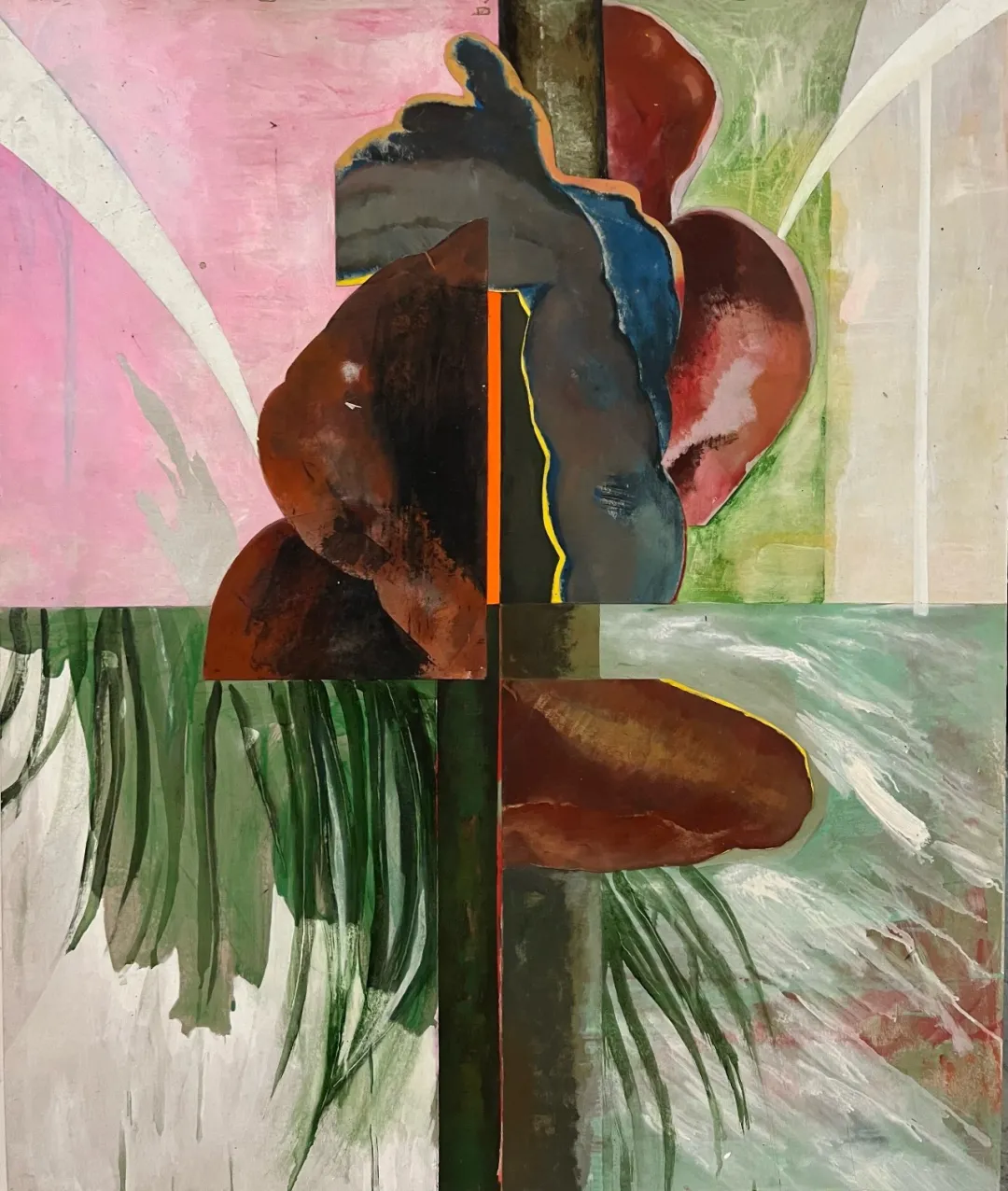
Che Lovelace, Single Climber, 2015, acrylic, paint and engraving on panel, 152.4 x 127 cm, VFS gallery
American artist Charlie Roberts was another artist Timothy Tan saw and loved at Art SG, presented by serial entrepreneur Kevin Poon’s WOAW Gallery booth. Roberts is famous for experimenting with new materials and techniques and drawing inspiration from pop culture, hip-hop, and comics. WOAW Gallery, which pushes the boundaries of entertainment, fashion, and art, opened its fourth outpost in Singapore during Art Week, after Hong Kong and Mainland China. Poon also revealed that in addition to Charlie Roberts, the gallery is representing trendsetting artists Stickymonger and Jon Burgerman, who have been well received by the market—in an announcement that has received a great initial response.
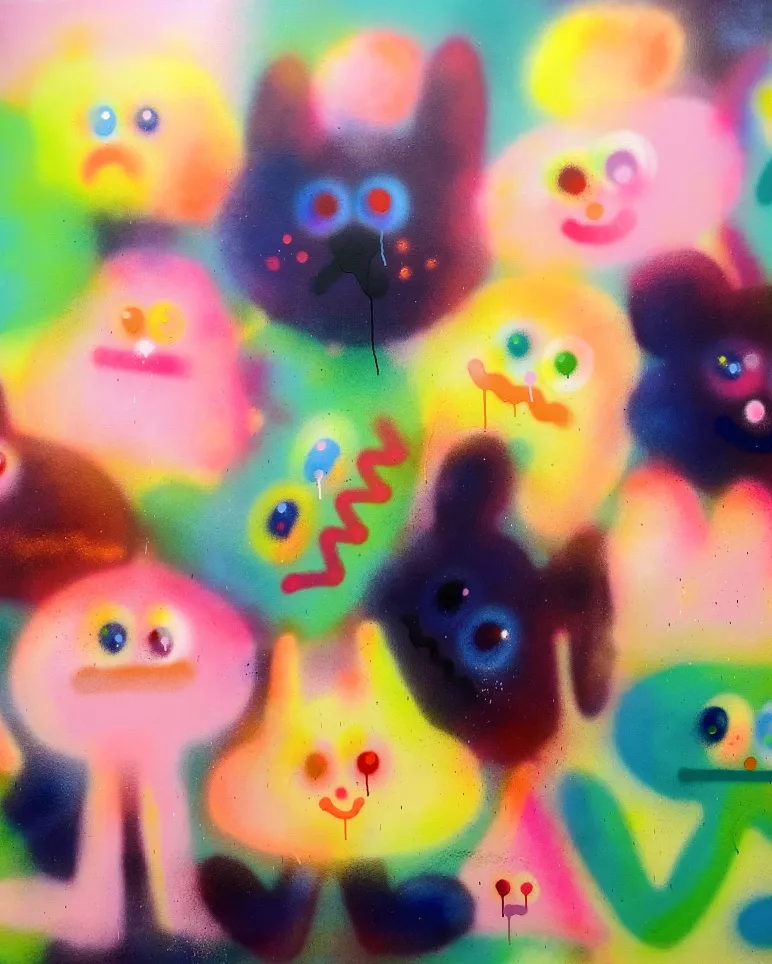
Jon Burgerman, Fortitude, 2022, inkjet on canvas, 162.5 x 181 cm, WOAW Galley
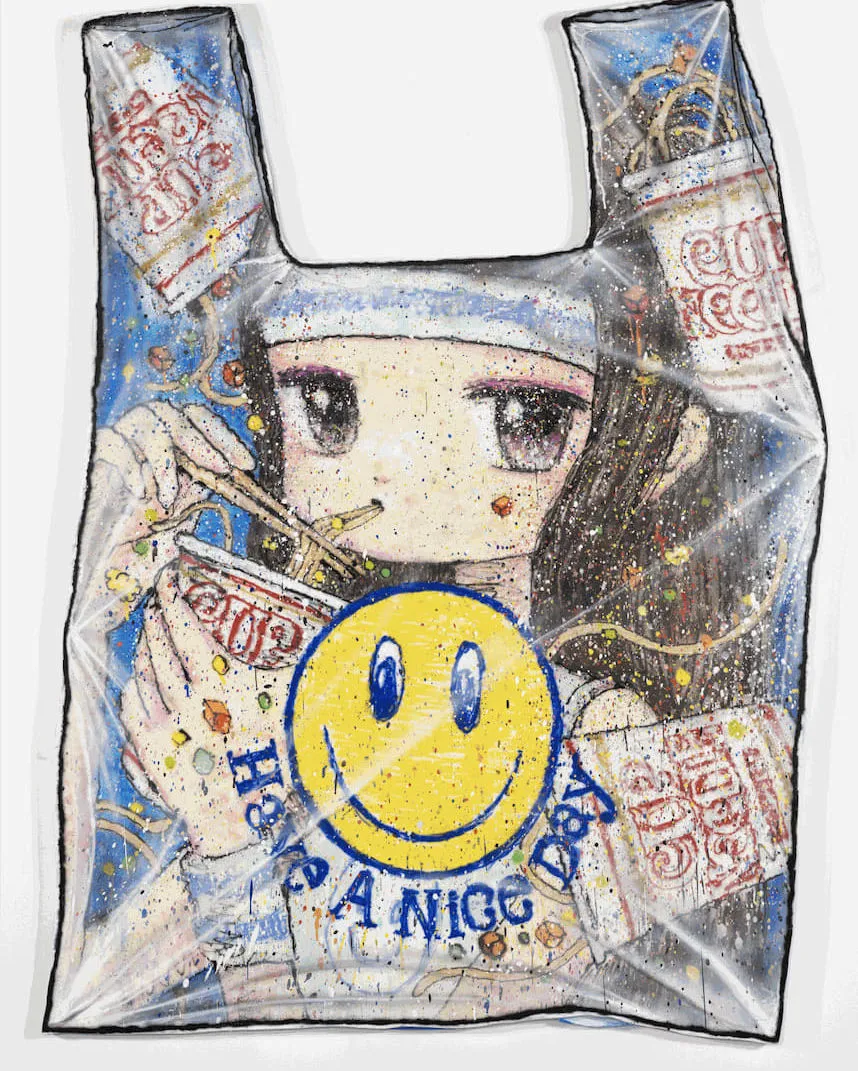
Stickymonger, Thank You, Plastic (Cup Noodle), 2022, 71.1 x 5.1 x 0.2 cm, Edition of 25, WOAW Galley
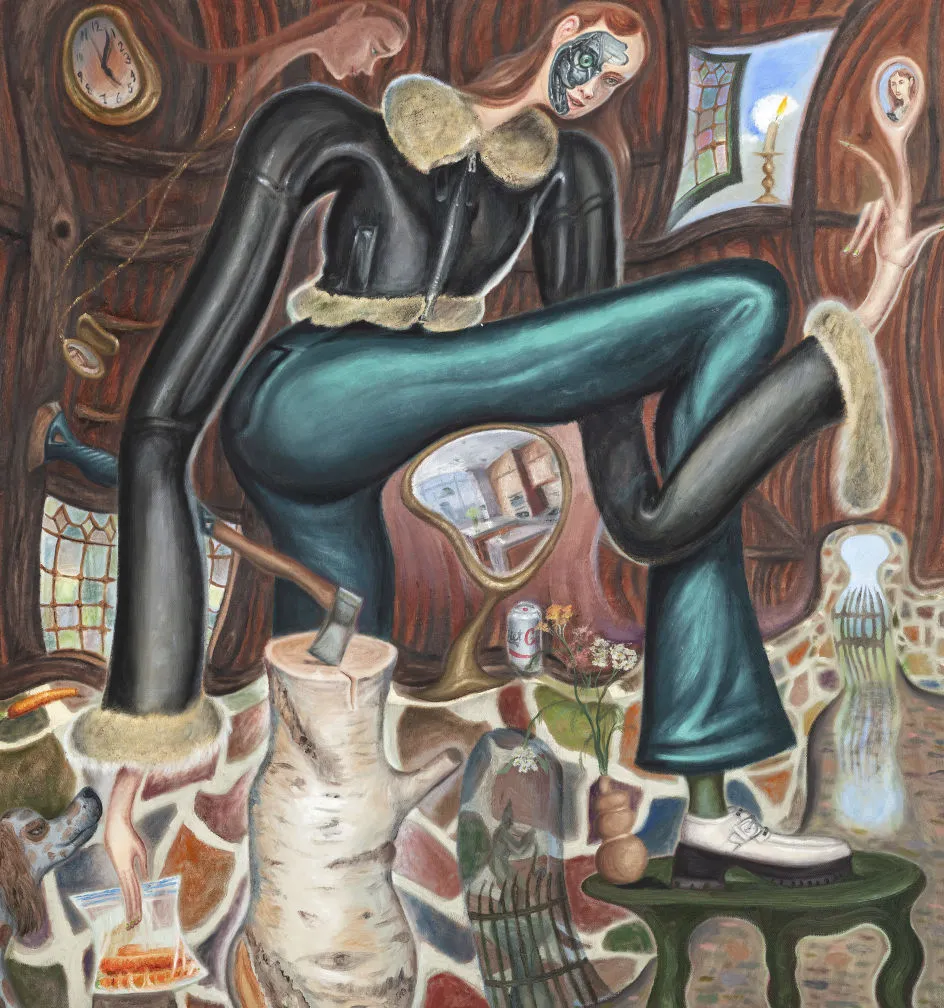
Charlie Roberts, Moment of Reflections, 2022, oil on linen, 140 x 130 cm, WOAW Galley
As we all know, many wealthy people from Indonesia and Mainland China have flocked to Singapore in recent years—and with the new money in the city, the potential of the art market can be stimulated. Despite this, there are not many international galleries in Singapore. Other than WOAW Gallery, there is currently only the Japanese Whitestone gallery. The gallery recently opened a new space in Singapore and is currently presenting a solo exhibition by Etsu Egami, one of the most in-demand artists during Art Week—her work was also included in the Fairyland Art Museum Singapore Space collection.
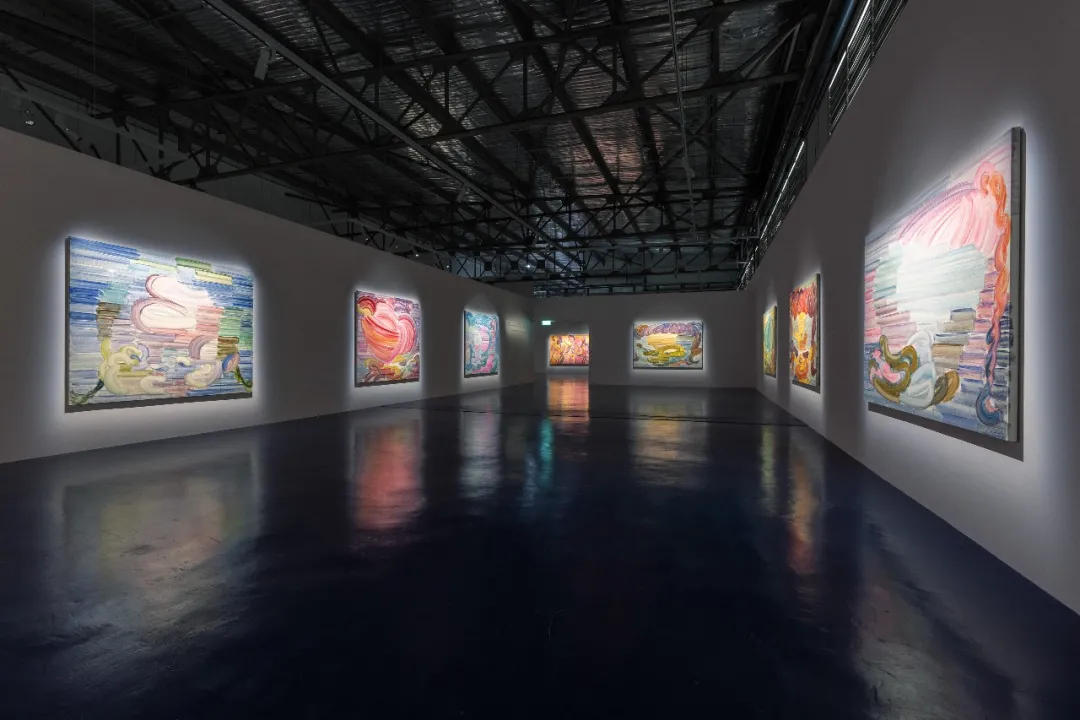
Installation view of Etsu Egami’s solo exhibition at Whitestone Gallery’s new space in Singapore
Art SG and the presence of overseas galleries in Singapore have brought a new and different international dimension to the local art market. Radisson Shen, a young collector and angel investor living in Singapore, observed that the country has long held a preference for Southeast Asian art. Most local galleries are discovering and displaying works by Southeast Asian artists, so the aesthetic of many collectors is still dominated by Southeast Asian styles. Collectors and galleries choose pieces demonstrating strong visual and cultural elements of the place, as shown in the works showcased by local galleries at the fair.
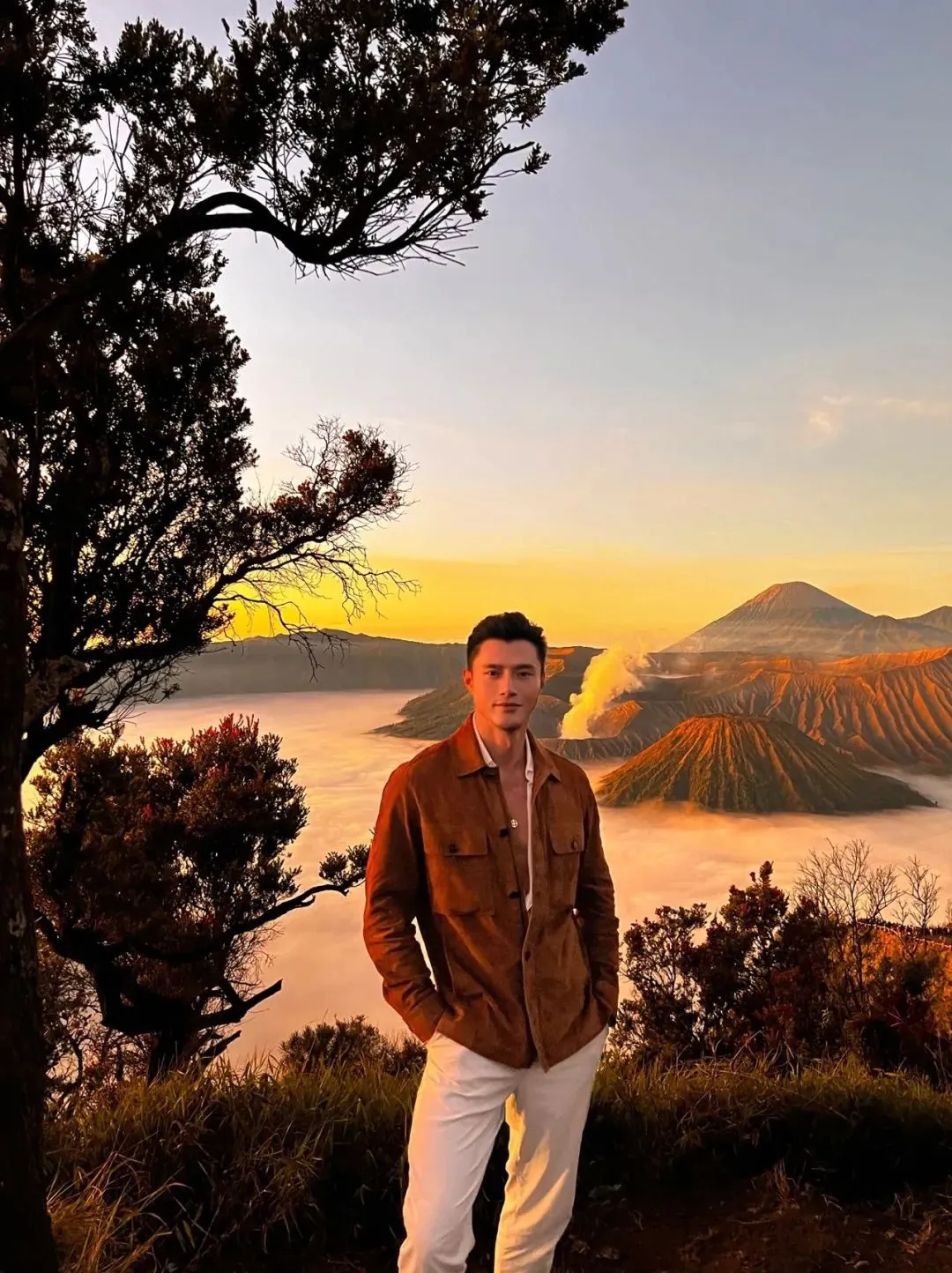
Young collector and angel investor Radisson Shen
When visiting Art SG, it is easy to see that the hot young international artists and art trends that can be found at fairs in China, Hong Kong, and Korea are not the focus of local collectors in Singapore. Some Southeast Asian collectors are slower to make decisions, which may also be in line with the relatively leisurely lifestyle of Southeast Asia, and therefore miss out on these fast-paced trends. A few of Radisson’s favourites at Art SG were James Turrell, represented by Pace Gallery, as well as works by Friedrich Kunath on show at Max Hetzler’s stand, whose tragicomic pieces are both poetic and personal. Elizabeth Glaessner, a young artist who works in an anecdotal and surrealist style presented by PPOW Gallery, and Miriam Cahn at Jocelyn Wolff Gallery, was another favourite. Her work presents a distinctive exploration of the connection between people and the world.
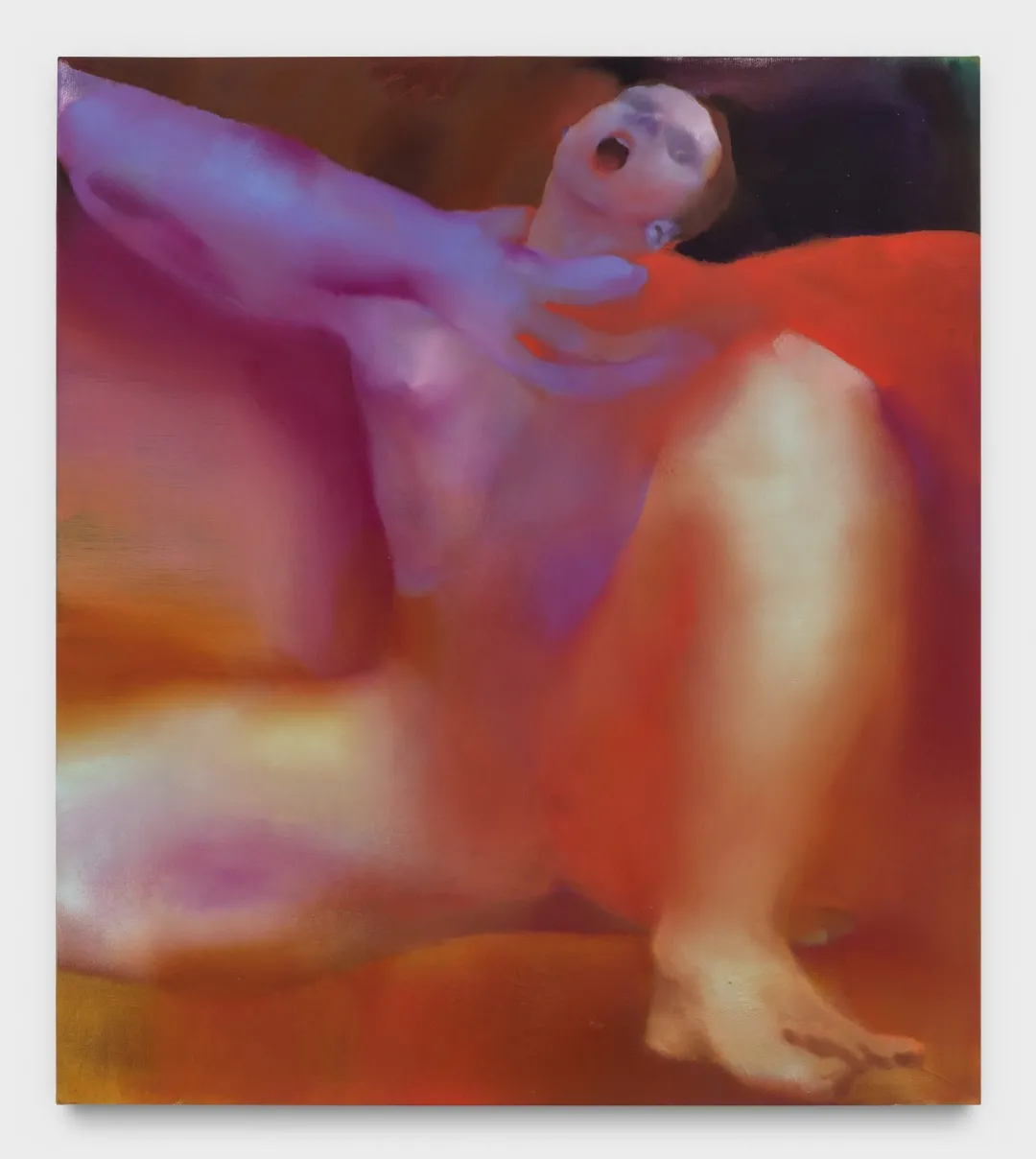
Elizabeth Glassner, Green Ribbon, 2022, oil on linen, 127 x 111.8 cm, PPOW
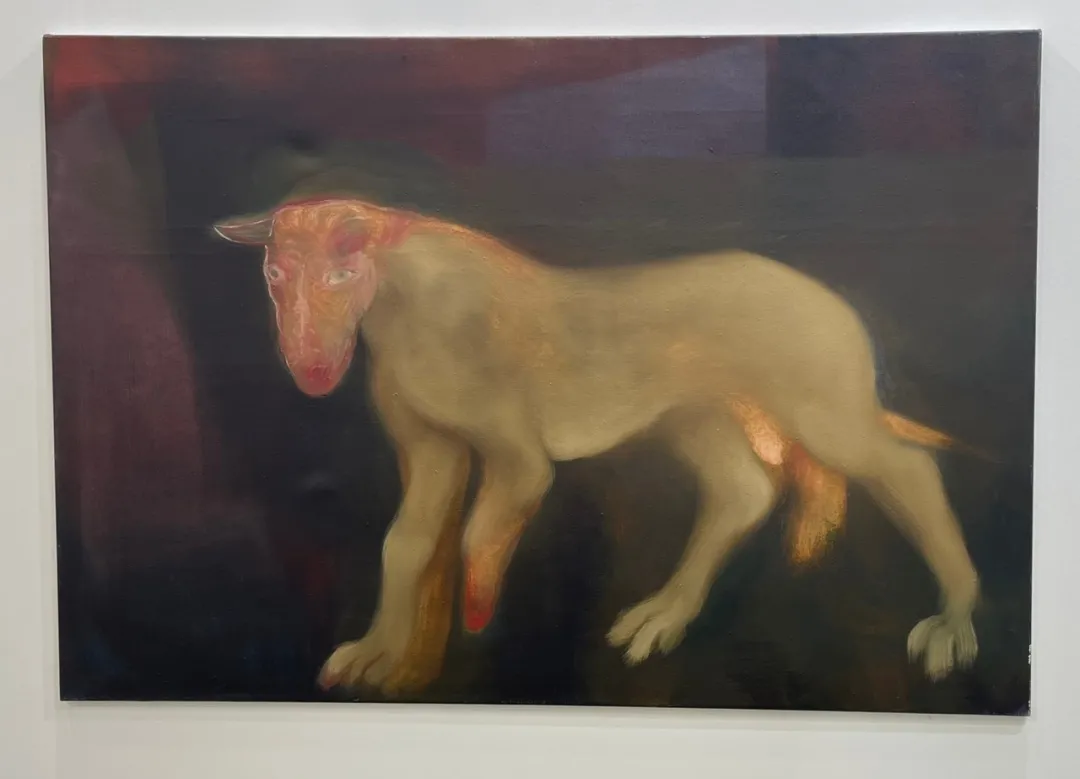
Miriam Cahn, Unheimlich, 2014 +23.02,17, 2014-2017, oil on canvas, 130 x 190 cm, Galerie Jocelyn Wolff

Friedrich Kunath, Long Term Happiness, 2021-2022, oil on canvas, 182.9 x 152.4 cm, Max Hetzler Gallery
Artists new to Radisson this year included Santiago de Paoli, an Argentinian artist living and working in New York, presented by Jocelyn Wolff Gallery. De Paoli works on unusual media such as felt, recycled textiles, and stencils; his surreal and uniquely composed works are characterised by subtly implied sexual metaphors.
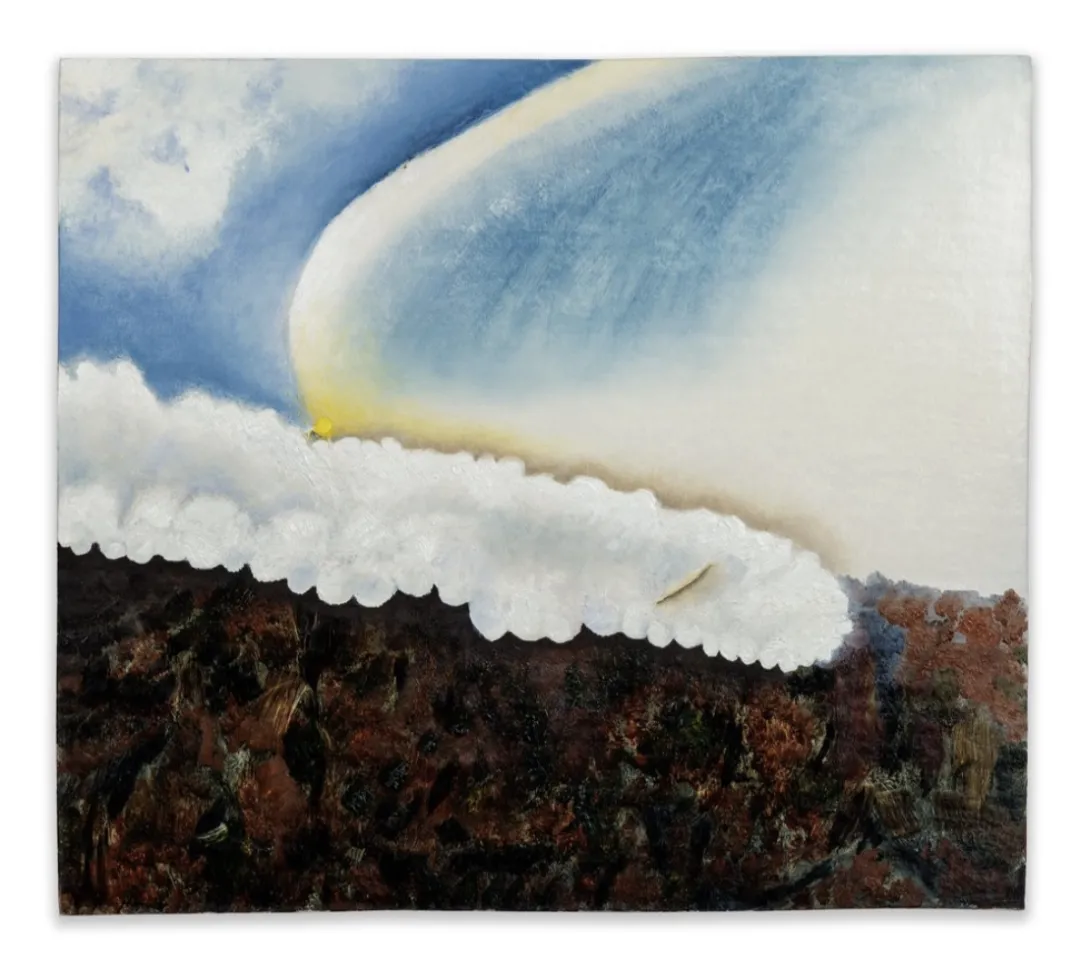
Santiago de Paoli, Morning clouds, 2021, fabric on canvas, 26 x 28 cm, Galerie Jocelyn Wolff
Benedicta M Badia de Nordenstahl, an Argentinean collector currently based in Chicago but lived in Singapore for five years, enjoys collecting and discovering new and emerging artists who challenge political, economic, and social conventions. She has gradually expanded the diversity of her collection; a recent acquisition was I Gusti Ayu Kadek Murniasih, an artist from Bali who explores the female body and gender.

Portrait of Benedicta M. Badia de Nordenstahl with her collection. Courtesy of Benedicta M. Badia de Nordenstahl.
In her view, artists need to first root their artistic ideas and practice in their own culture to understand themselves within the context of their own region. They can then reflectively perceive and position their artistic practice internationally and geopolitically. As a result, their work will be both locally and globally relevant and significant. An example of this is the Singaporean artist Ming Wong, and Benedicta believes that any artist with such a practice has the opportunity to succeed in the international market.

Daniel Lie’s work at the Singapore Biennale
This Singapore Art Week, she ran into an old flame of hers, Indonesian artist Daniel Lie, whose work is also on display at the 2022 Singapore Biennale (Biennale until 19.3.2023). Their practice explores scientific, spiritual, and philosophical elements of death and seeks to understand the multi-layered relationship between various forms of life.
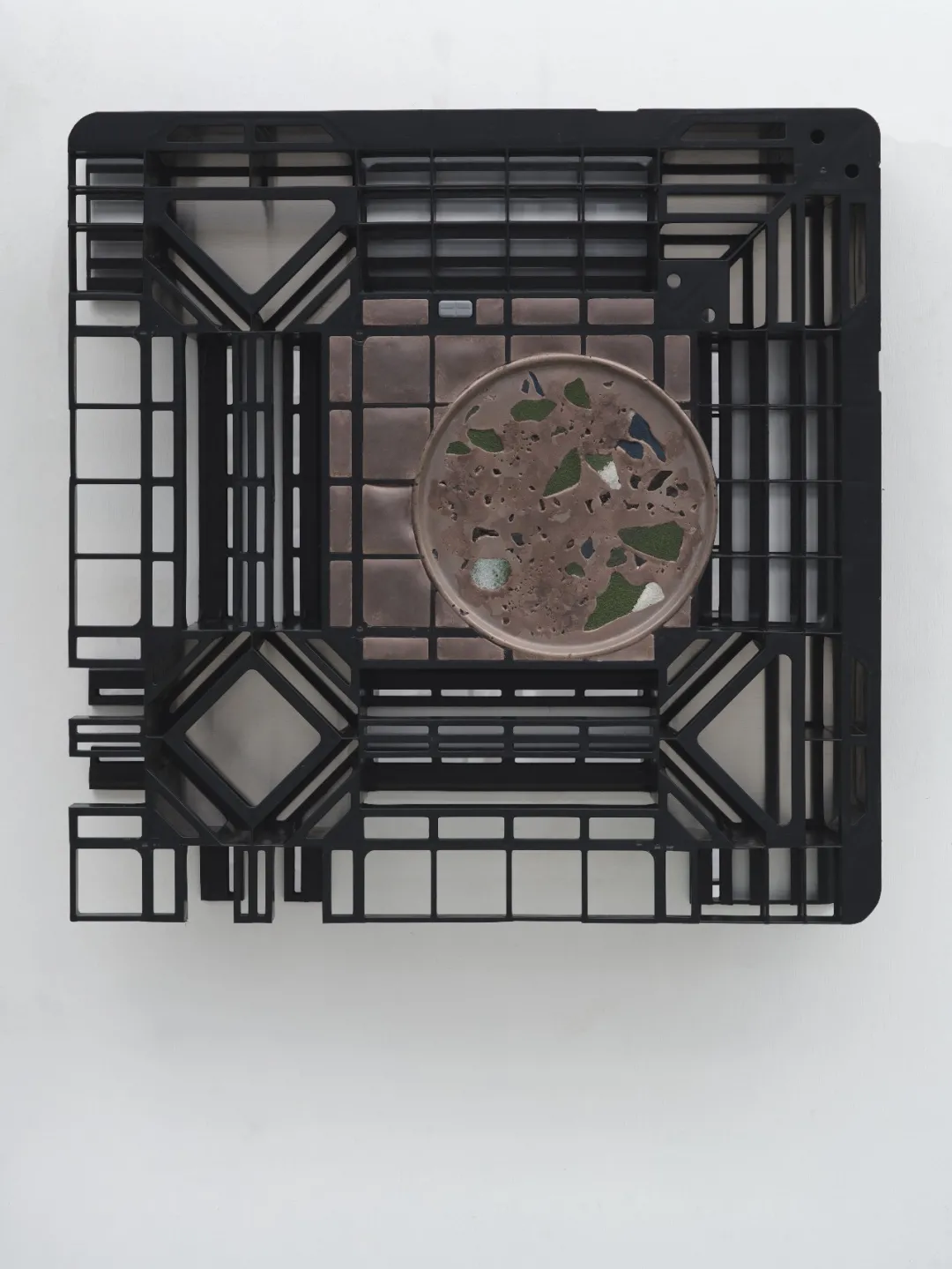
Leelee Chan, “Cipher (Surface Modular)”, 2022, 71 x 71 x 13 cm, Capsule Shanghai
Benedicta also enjoyed the work of Leelee Chan, who is represented by Capsule Shanghai. Hong Kong-born Leelee Chan’s sculptures combine urban debris, historical artefacts, and natural materials to create a visual conflict through a combination of industrial and everyday materials and reflect the changing zeitgeist of the city and her home, Hong Kong.

I GAK Murniasih Menari Di Atas Awan (Dancing Above The Clouds), 1998
Benedicta’s newfound loves this year were Inci Eviner, a female artist whose work was presented by Turkish gallery Dirimart; Waswo X Waswo, an American photographer and poet who has lived in India for over twenty years; and Kim Sooja, a Korean artist who contemplates themes of identity and social impact through her artwork.
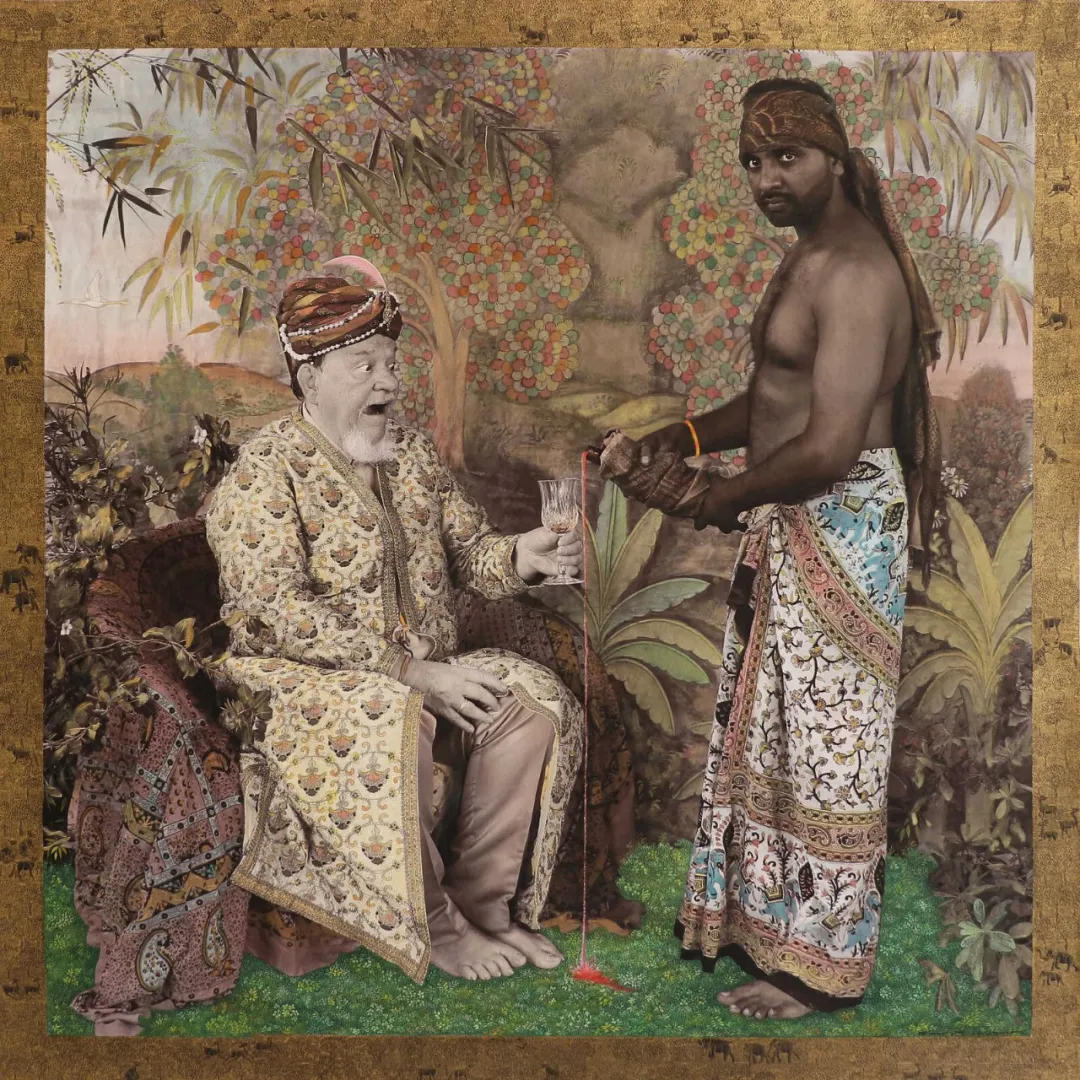
Waswo X Waswo, A Visitor to the Court – 18, 2022, black and white photography, 27.9 x 27.9 cm, Editions 2, 3 of 3 + 2AP, Latitude 28 gallery
During Singapore Art Week, the exhibition From Western Minimalism to Asian Political Abstraction, curated by Edward Mitterrand from the collection of Pierre Lorinet, an art collector now living in Singapore, was on display at Gillman Barracks. The exhibition focuses on works from Lorinet’s collection over the past decade. Most of the works on display are by well-known artists, including Dan Flavin, Donald Judd, Lee Ufan, Liu Wei, and Nam June Paik. Lorinet told me that his favourites from Art SG include Ibrahim Mahama, Oscar Murillo, Sopheap Pich, Rirkrit Tiravanija, and local Singaporean artist Dawn Ng.
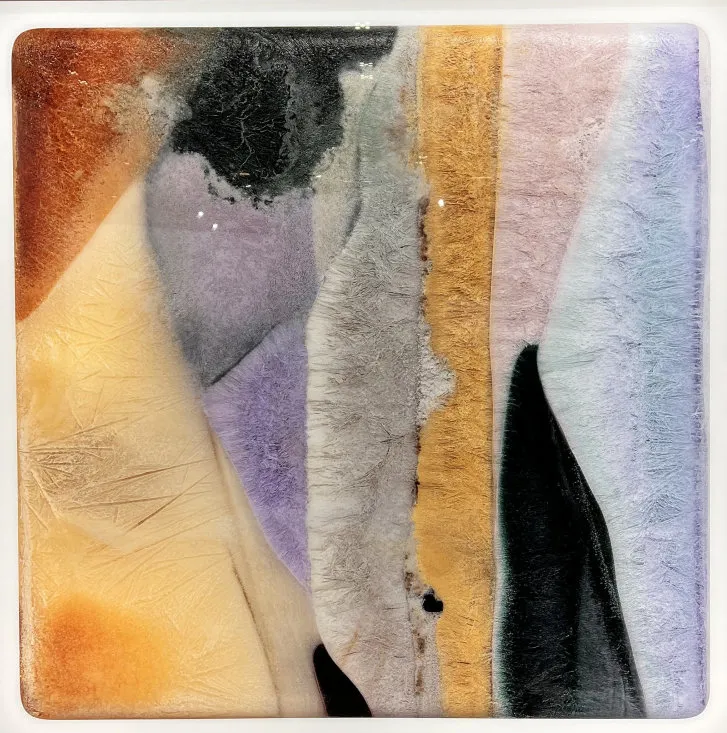
Dawn Ng, How Else Could You Tie My Head to the Sky, 2022, lightbox, 140 x 140 cm, Editions 1-4 of 5 + 2AP, Sullivan+Strumpf

Pierre Lorine Collection Exhibition “From Western Minimalism to Asian Political Abstraction”
During the inaugural ART SG fair in Singapore, many art industry people and collectors chose to gather at Hawaii Niteclub after a busy day. This popular club was the venue for a party organised by Kevin Poon, founder of WOAW Gallery and entrepreneur, and Sotheby’s Asia’s Director of Private Sales, Nick Buckley Wood, as well as Singapore’s street fashion leader Earn Chen. Hawaii Niteclub is Singapore’s oldest local entertainment venue and has retained its original decor since opening in the 1970s—red paper lanterns, shabby orange stalls, red padded walls, and colourful LEDs—giving it an iconic South East Asian feel. True to the owner’s original intention of providing a great place to entertain all walks of life—the venue hosts two live bands each night, with around twenty singers taking turns on stage to perform many traditional tunes from China’s Guangdong and Fujian regions. The nostalgic atmosphere is a way to travel back in time for those who have flown to Singapore from all over the world to see the show. Even Tokyo-based Galerie Supermarkt’s gallerist, Dashui Hao, said to me that the Hawaii Niteclub’s evocative performance was one of the best ‘pieces’ he had seen during this year’s art week.

Hawaii Nightclub
With the many dinner parties during Art Week, it is perhaps the originality of the Hawaiian Nightclub that impresses the socially exhausted collectors and artisans alike—offering a strong vintage feel to the Chinese and a far-away feel to the foreigners. The night also inspired me to contemplate the local art market and what it takes to capture the hearts of collectors during Singapore Art Week and other regional fairs. Whether having a party or presenting artworks, perhaps the key is nostalgia—people are still more likely to accept what is already familiar. But it is also about showing something different, especially for collectors who are used to the new and never-before-seen and travel to exhibitions and fairs all the time. Maybe tradition is sometimes the key to capturing the hearts of even experienced and knowledgeable collectors, who come to a new market expecting to discover styles and unseen local artists. Instead, it is the notion of tradition that gives context and familiarity to a place and its people.
-the end-
Text: Luning
Copyediting: Rosie


